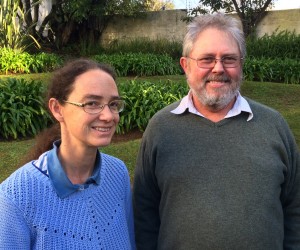As South Africa starts drawing on solar energy to meet growing electricity demand, it is also pioneering the best ways of responsibly managing the groundwater impact of these vital projects.
According to Sheila Imrie, principal hydrogeologist and numerical groundwater modeller at SRK Consulting (South Africa), the firm has already developed a 'best practice' approach on the strength of several groundwater impact assessments for proposed solar energy sites - in particular the SolarReserve South Africa (SRSA) Kalkaar project near Jacobsdal in Free State province.
"A recent focus has been on the use of concentrating solar power (CSP) technology, which is better able to address the issues of scalability and electricity storage," said Imrie who is based in the Cape Town office of SRK. "This process relies on the use of a liquid salt solution and requires a reliable water source."
Usually located in hot, dry parts of the country, solar energy plants seldom have access to surface water and have to establish - at an early stage of planning - sufficient potential for groundwater supply to meet operational needs, she said. At the same time, the risk of groundwater contamination - due to liner failure in waste water evaporation ponds, for instance - must also be assessed.
"Groundwater is becoming increasingly important to SA's growing population and economy, with small towns and farmers being particularly dependent," said Des Visser, associate partner and principal hydrogeologist. "Monitoring, conserving and avoiding contamination of these resources is now a national priority."
Visser said a geohydrological assessment is required to inform the Environmental Impact Assessment (EIA) in the initial phases of these projects; SolarReserve had raised the bar by requesting more in-depth studies that included drilling and field testing, numerical modelling and scenario simulations, all supporting detailed impact analysis.
"Our 'best practice' approach arising from this and previous work encompasses a number of key principles, and prioritises the use of conceptual and numerical models," he said. "This modelling function improves the reliability of predictions, allows better communication with stakeholders, and reduces both capital expenditure and maintenance costs."
This approach requires that the geohydrological assessment be implemented in clearly defined stages, said Imrie: planning, conceptualising, developing of a numerical model, running of predictive scenarios, calibrating the model, and impact analysis.
"When developing the conceptual model in the second phase, we maximise the value of the data gathered for the geohydrological baseline by organising it in a Geographical Information System (GIS) database, and fill data gaps wherever technically feasible and affordable," she said. "Detailed analysis of this data, as well as further interrogation in later stages, allows us to update our assumptions and to formulate more realistic predictive modelling scenarios."
Visser highlighted the value of numerical groundwater model outputs to assess impacts and produce high-quality visual presentations to stakeholders.
"Using a number of appropriate software tools, we are able to model groundwater abstraction scenarios to simulate the drawdown impact from on-site pumping," he said. "In the case of the SolarReserve's Jacobsdal project, for instance, the water demand was substantial and scenarios included: 180,000 m3/a, the water supply for a combination of photovoltaic (PV) and dry cooling CSP plants; 400,000 m3/a, for a combination of PV and hybrid cooling CSP plants; and 10,000 m3/a, for a PV plant only."
Combining the integrity of the data with the power of visual schematic diagrams allows for much better communication of results, he said. Stakeholders, such as local farmers who are also receptors of groundwater impacts, can therefore be given an unambiguous understanding of the degree of potential impacts to their farms. Of equal significance, scenarios where no impacts are anticipated can be better communicated.
The 'best practice' approach also ensures that high levels of confidence could be achieved in the results of the numerical modelling process, said Imrie.
"These confidence levels are important because the model needs to support water licence applications - including the provision of sustainable abstraction rates," she said. "If the licensing applications are well supported scientifically, there are likely to be minimal queries from the authorities and fewer delays in the regulatory process."
SRK's approach also has direct benefits in terms of costs and management considerations, such as the footprint positioning and efficacy of lining systems for the evaporation ponds, said Visser.
"The financial benefits of applying this best practice are also clear from our past projects," he said. "At Kalkaar, for instance, the increased accuracy of our reported findings will reduce capital expenditure and minimise ongoing maintenance due to the appropriate positioning and lining design of the evaporation pond."
It is clear that defendable groundwater projects will rely on the continued evolution of techniques and the ability to identify techniques that are appropriate for the project's technical setting, said Imrie, a process in which SRK is playing a pioneering role.











